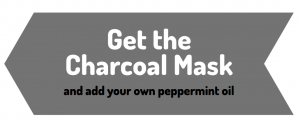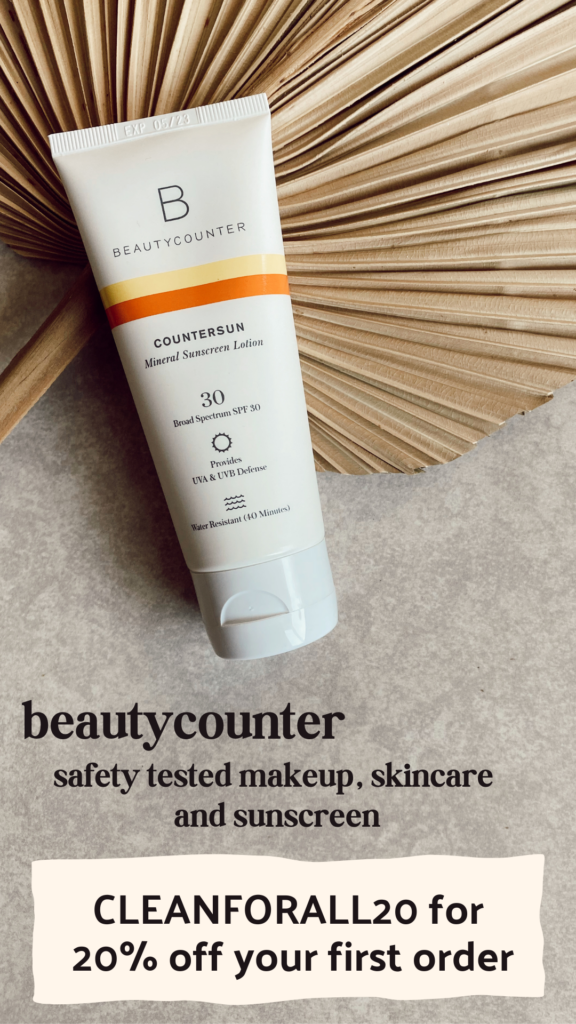Five natural ways to relieve TMJ pain that causes facial swelling, difficulty chewing and sore, tight neck muscles. Try these five natural pain-relieving techniques the next time you’re experiencing TMJ, jaw or head pain.
I developed TMJ pain after I had my first daughter three years old. Between the funky nursing positions, looking down all the time, carrying her on my hip, back and in front of my body, my neck and back alignment suffered. The stress of parenthood and post-partum anxiety resulted in overnight jaw clenching as well. I would wake up in the morning feeling like I had a jaw of steel from clamping down so hard while I slept.
My first post-partum visit to the dentist required imaging which showed my left TM joint was completely worn down and misaligned. My bite was off, and I was getting frequent headaches, neckaches and sinus infections. I also suspect I have temporal tendonitis – pain and swelling along the temporalis tendon that connects to the lower jaw. Symptoms of temporal tendonitis can mimic migraines and TMJ and can also cause pain/pressure behind the eye, chronic sinusitis, and tenderness to the touch. There are days where the left side of my face is so swollen that I can’t smile, laugh or chew. On those days, it’s no coincidence that my neck and traps are incredibly tight.
1. STRETCH IT.
Often times tight neck, shoulder and back muscles can be the culprit for increased jaw pain and vise versa! Tech neck, nursers’ neck, and other maladaptive head positioning causes shortening of the dozens of muscles that make up the neck, back and shoulders. Specifically, tight anterior traps, SCM (sternocleidomastoid) and scalene muscles can cause pulling on the muscles surrounding the jaw, worsening TMJ dysfunction and alignment and leading to pain and inflammation.
You may also need to adapt your exercise. I no longer lift weights overhead or work my trapezius muscles (unless I’m performing bodyweight exercises in yoga). Once I quit lifting weights, the chronic trap tightness mitigated practically overnight.
My favorite TMJ stretches include:
-
Lateral neck flexion to release scalenes: bend neck towards shoulder and use hand to apply gentle but firm pressure to skull to increase stretch
-
Later neck flexion with extension to release SCM: open mouth slightly, bring ear toward shoulder and extend neck backward at about a 45 degree angle to target SCM. Massage SCM by stroking downwards from the jaw towards the sternum. The SCM is the large neck muscle that pops out if you stick your neck out.
-
Forward neck flexion with assist to stretch occiput: bend chin towards chest, place hands behind head with fingers intertwined, rolling neck from side to side targeting back of neck where it meets the skull (occiput). You may also feel this stretch down the middle of your back.
2. ICE ROLLER
One of my Instagram community members recommended the Ice Roller to me – available on Amazon. This freezable roller can be easily glided across the jaw, temple, cheeks and neck to relieve pain, inflammation and swelling. If you’re looking for an alternative to a cold pack you have to hold against your face (which results in shortening and tensing of the shoulder and neck muscles you’re trying to relax), try this affordable TMJ cold relief tool!
You’ll find it stays cold for up to an hour out of the freezer. Use it for 10 to 15 minutes every hour or as needed on your affected jaw and neck muscles.
3. ESSENTIAL OILS
Surprisingly, the natural tool that has helped me avoid over-the-counter pain relievers the most: essential oils! My top three favorite products for TMJ and sinus pain relief: Deep Blue Muscle Rub, Past Tense Roller and the Peppermint Oil.
How to Use Deep Blue Muscle Rub: Massage the muscle rub into your neck, shoulders and occiput (the very back of your head where your skull meets your neck). Better yet – have someone else massage you so you can rest your muscles! The cooling and numbing sensation of this muscle rub formulated with essential oils like wintergreen and eucalyptus and peppermint oil are shockingly powerful.
How to Use the Paste Tense Roller: Roll a small amount of the oil over your temples and jaw, avoiding your eyes. This is stronger smelling oil (wintergreen, lavender, peppermint, basil and cilantro to name a few) but it works remarkably well for any tension headaches caused by tight muscles and a misaligned TMJ. Use as needed.
How to Use Peppermint Oil: Mix a very, very small drop of Peppermint Oil (any brand will do here) into the Beautycounter Charcoal Mask. Apply over your entire face including your temples and forehead. The peppermint oil works to minimize any headache as well as relieve congestion and swelling due to poor sinus drainage from a misaligned TMJ.
4. SELF-MASSAGE WITH FOAM ROLLING AND LACROSSE BALL
As I’m sure you’ll agree, you would really like a massage right now, wouldn’t you? If you can’t get into a practitioner, learn some self-massage techniques to bring you relief.
HOW TO SELF-MASSAGE FOR TMJ
1) Foam rolling is an excellent way to combine self massage with breaking up tight fascia (the layer of tissue overlaying muscle, pulling on joints in dysfunctional patterns if tight). Focus on the following muscle groups with your foam roller: trapezius, erector muscles (the long muscles that line your spine) and the muscles surrounding your scapula.
2) Dig deeper and more specific with a lacrosse ball. This exercise is not for the faint of heart but can provide immediate relief. Face away from a wall and place the lacrosse ball at shoulder/trapezius level. Press your body into the ball, rolling it up, down and around, settling into a trigger points. Turn around to face the wall and do the same with your pectoralis muscles. Tight pectoralis muscles can pull your shoulders forward and hike your anterior traps into sustained tension, pulling on the scalenes and SCM muscles of the neck.












3 Responses
Hi Grace,
First, I love your website and your cookbook. I am physical therapist and mama of young boys who is currently trying to navigate the world of AIP. This article is great. I just want to add that physical therapy can truly make a difference in TMJ dysfunction. We find the cause, as there can be multiple reasons for it happening in that little joint, and treat as indicated. If you can find a PT that is certified in dry needling it works wonders! That chronic upper trap tightness? Dry needling is amazing for it! And there are no meds involved!
Thanks for being so real in this journey.
Thank you, Meg! You’re not the first person to call me Grace – we are attached at the hip – it happens often ha Thanks so much for the dry needling PT tip! I’ve had dry needling done for calf tightness and it really works wonders! I’ll be sure to find a PT certified in too!
Agh! Alaena! Sorry, it’s 5 am. Just realized I called you grace after reading your IG post! This is my week to give up coffee